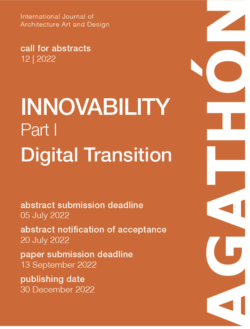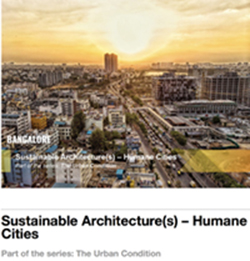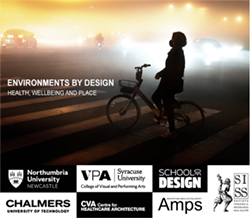ISSN (online): 2412-3811
Call of the Journal:
- Advances in the Management and Application of Construction and Demolition Waste
- Agricultural Infrastructure
- Application of Artificial Intelligence to Model the Behavior of Infrastructure
- Application of Machine Learning and Artificial Intelligence in NDE and Structural Health Monitoring of Civil Infrastructures
- Big Data Analysis and Visualization in Transport Infrastructure | Challenges for Operations, Control, and Planning
- Critical Infrastructure Resilience Facing Extreme Weather Events
- Designing and Managing the Next Generation of Transportation Infrastructure
- Durability of Concrete Infrastructure
- Innovative Practices into Road Pavement Maintenance Management
- Inspection, Assessment and Retrofit of Transport Infrastructure
- Neural Networks in Land Transport, Vehicle and Railway Engineering
- Non-destructive Testing and Evaluation for Civil Infrastructures
- Pavement Management | Inspection and Life-Cycle Assessment
- Pedestrian and Bicycle Mobility in the Future Cities of the World | Between Adapting Infrastructure and Changing Behavior
- Rail Infrastructures
- Reliability and Durability of Pipelines
- Remote Sensing and Infrastructure Information Models | Methods, Applications and Smart Management of Infrastructure Data
- Research and Developments in Pavements
- Resilient and Smart Transport Infrastructure for Connected and Autonomous Vehicles
- Reusing, Recycling and Repurposing Infrastructure | Components and Construction Materials
- Road and Rail Infrastructures
- Seismic Reliability Assessment and Advances in Structural Modelling
- Selected Papers from the 8th Civil Structural Health Monitoring Workshop
- Smart Infrastructures
- Smart Materials for Sustainable Infrastructures
- Smart, Sustainable and Resilient Infrastructures
- Structural Assessment and Health Monitoring of Infrastructures
- Structural Health Monitoring of Civil Infrastructures
- Structural Performances of Bridges
- Sustainability of Building Materials and Structures
- Sustainability of Concrete Infrastructures | New Applications, Monitoring and Retrofitting
- Ultra-High Performance Concrete (UHPC)
- Underground Infrastructure Engineering
Jun
2021
Transport Systems are equipped with multiple systems that collect large quantities of data every day, every hour, or even every second, at various forms and by different technologies. This means the traffic and transport data in many cases are ‘voluminous’, are generated at a high ‘velocity’, have a high ‘variety’, and have a considerable ‘veracity’. The challenge today is to process this big data to derive meaningful results and insights. All modes of a transport network face a form of this challenge, large amounts of trajectory data, count data, and traffic signal control data are generated in the road network, while transit systems (rail, bus, ferry) generate large volumes of data from their automatic fare collection and vehicle location technologies. Shared mobility and combined mobility solutions such as Mobility as a Service (MaaS) or Infrastructure as a Service (IaaS), generate a multi-modal and door-to-door trip and activity information. This special issue is calling for papers that address one aspect of this big data challenge whether the data management side or operations and control of an existing system or improving the planning of the transport infrastructure in the future. Some aspects of the data side and the method side are listed below.
Various Data Sources: Traffic Sensors for traffic count, occupancy, and speed; Automatic data collection technologies, such as Bluetooth, WiFi, GPS, Image Processing, and Video Processing; Smart Phone Data including Global Positioning System (GPS) tracks; Smart Card Data from public transport Automatic Fare Collection (AFC) Systems; Automatic Vehicle Location from trains, buses, bikes, and ferries; Traffic Signal Control Systems; Autonomous Vehicle and Connected Vehicle Systems.
Methodologies: Visualization of Big Data Sources; Cleaning, Management, and Storage technologies; Development of Performance measures, indices, and indicators; Data Analytics and Analysis Methods; Application of Artificial Intelligence and Machine Learning methods; Optimization of Transport Infrastructure; Data Fusion and Error handling; Network control methods based on the Macroscopic Fundamental Diagram (MFD); Control algorithms to improve safety, efficiency, social welfare, and environmental impacts.
Big Data Analysis and Visualization in Transport Infrastructure | Challenges for Operations, Control, and Planning
Transport Systems are equipped with multiple systems that collect large quantities of data every day, every hour, or even every second, at various forms and by different technologies. This means the traffic and transport data in many cases are ‘voluminous’, are generated at a high ‘velocity’, have a high ‘variety’, and have a considerable ‘veracity’. The challenge today is to process this big data to derive meaningful results and insights. All modes of a transport network face a form of this challenge, large amounts of trajectory data, count data, and traffic signal control data are generated in the road network, while transit systems (rail, bus, ferry) generate large volumes of data from their automatic fare collection and vehicle location technologies. Shared mobility and combined mobility solutions such as Mobility as a Service (MaaS) or Infrastructure as a Service (IaaS), generate a multi-modal and door-to-door trip and activity information. This special issue is calling for papers that address one aspect of this big data challenge whether the data management side or operations and control of an existing system or improving the planning of the transport infrastructure in the future. Some aspects of the data side and the method side are listed below.
Various Data Sources: Traffic Sensors for traffic count, occupancy, and speed; Automatic data collection technologies, such as Bluetooth, WiFi, GPS, Image Processing, and Video Processing; Smart Phone Data including Global Positioning System (GPS) tracks; Smart Card Data from public transport Automatic Fare Collection (AFC) Systems; Automatic Vehicle Location from trains, buses, bikes, and ferries; Traffic Signal Control Systems; Autonomous Vehicle and Connected Vehicle Systems.
Methodologies: Visualization of Big Data Sources; Cleaning, Management, and Storage technologies; Development of Performance measures, indices, and indicators; Data Analytics and Analysis Methods; Application of Artificial Intelligence and Machine Learning methods; Optimization of Transport Infrastructure; Data Fusion and Error handling; Network control methods based on the Macroscopic Fundamental Diagram (MFD); Control algorithms to improve safety, efficiency, social welfare, and environmental impacts.
DOAJ, Inspec (IET), Scopus (Elsevier), CLOCKSS (Digital Archive), e-Helvetica (Swiss National Library Digital Archive), Google Scholar, J-Gate (Informatics India), ProQuest Central (ProQuest), Science In Context (Gale/Cengage Learning).
Info at: www.mdpi.com/journal/infrastructures/apc
Guest Editors
Dr. Behrang Assemi
Dr. Ning Zhu
Dr. Mahmoud Mesbah










